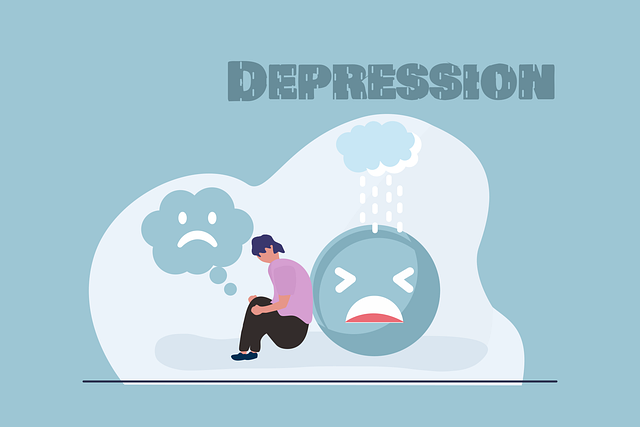Public awareness campaigns leveraging Superior Exposure and Response Prevention Therapy (SERPT) as a core strategy are transforming societal attitudes towards mental health and wellness. By utilizing various communication channels, these campaigns increase superior exposure, encouraging behavior modification and building individual and social resilience. Organizations like Stress Management Workshops integrate SERPT into their narratives, challenging stigma and driving policy changes. Measuring success through reach, engagement, public perception shifts, and behavioral changes is crucial for continuous improvement and lasting impacts on mental well-being globally.
Public awareness campaigns play a pivotal role in shaping societal behavior and addressing critical issues. This article delves into the art and science of crafting successful initiatives, focusing on understanding their impact, integrating innovative therapies like Superior Exposure and Response Prevention Therapy (SERPT), and defining key success metrics for evaluation. By exploring these aspects, we aim to illuminate best practices for creating campaigns that drive meaningful change.
- Understanding Public Awareness Campaigns: The Role in Behavior Change
- Integrating Superior Exposure and Response Prevention Therapy (SERPT) in Campaign Strategies
- Measuring Success: Evaluation Metrics for Effective Public Awareness Campaigns
Understanding Public Awareness Campaigns: The Role in Behavior Change

Public awareness campaigns play a pivotal role in shaping societal behavior and fostering positive change. These initiatives aim to educate and inform individuals about various issues, encouraging them to adopt new habits or perspectives. By leveraging communication strategies, such as social media, billboards, and community events, these campaigns offer superior exposure, a key component of Exposure and Response Prevention Therapy (ERP). Through continuous reinforcement, they help in building resilience against negative behaviors or beliefs by preventing conditioned responses.
Moreover, successful awareness campaigns often incorporate elements like compassion cultivation practices and positive thinking to create a supportive environment. By encouraging empathy and understanding, these approaches not only promote individual well-being but also foster social cohesion. This holistic approach ensures that behavior change is sustainable, as it taps into people’s inherent capacity for resilience, making the campaigns truly impactful in the long run.
Integrating Superior Exposure and Response Prevention Therapy (SERPT) in Campaign Strategies

In recent years, mental health advocacy has seen a surge in innovative strategies to increase public awareness, one of which is integrating Superior Exposure and Response Prevention Therapy (SERPT) into campaign narratives. SERPT, a evidence-based approach, focuses on gradual exposure to feared situations or objects with an emphasis on preventing avoidance behaviors, ultimately fostering resilience and confidence. By incorporating this therapy model into public awareness campaigns, organizations like Stress Management Workshops can effectively communicate the importance of mental health proactive measures. This method not only empowers individuals to confront their fears but also promotes a deeper understanding of stress management techniques.
Furthermore, aligning SERPT with broader initiatives such as Mental Health Policy Analysis and Advocacy ensures that campaign messages resonate on both individual and societal levels. By highlighting successful SERPT implementations, these campaigns can challenge stigma, encourage open conversations about mental health, and ultimately drive policy changes to support better mental well-being in communities worldwide.
Measuring Success: Evaluation Metrics for Effective Public Awareness Campaigns

Measuring success is an integral part of any public awareness campaign. To evaluate its effectiveness, especially in promoting mental wellness and preventing burnout, several key metrics can be employed. These include tracking the reach and engagement of the campaign, gauging changes in public perception through surveys and focus groups, and monitoring behavioral shifts related to the targeted issues. For instance, a campaign focused on Superior Exposure and Response Prevention Therapy (SERPT) might measure success by observing an increase in awareness about stress management techniques among the target audience, as well as a reduction in search trends for traditional burnout prevention methods.
Additionally, long-term impact should be considered, such as changes in social skills training participation rates or improvements in overall mental health indicators within communities exposed to the campaign. Regularly assessing these evaluation metrics enables campaign organizers to adapt strategies, ensure continuous improvement, and ultimately, achieve more substantial and lasting results.
Public awareness campaigns play a pivotal role in catalyzing behavioral change by effectively communicating key messages that resonate with diverse audiences. Integrating Superior Exposure and Response Prevention Therapy (SERPT) into campaign strategies enhances their impact by fostering lasting attitudes and behaviors. Measuring success through robust evaluation metrics ensures that these initiatives are not just informative but also transformative, ultimately leading to positive societal changes. By combining innovative therapeutic approaches with data-driven evaluations, public awareness campaigns can become powerful tools for creating meaningful, measurable, and enduring impacts.














